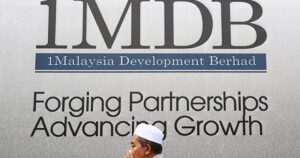
Malaysia’s gross domestic product (GDP) grew by 5.2% in the third quarter from 4.4% a year ago, driven by sustained domestic demand and higher net exports.
The country’s strong economic growth was supported by robust household spending and tourism activities that boosted domestic demand.
Household spending was supported by positive labour market conditions, income-related policy measures, and cash assistance programmes, Bank Negara Malaysia (BNM) said in a statement.
“Investment activity was underpinned by continued capital expansion by both private and public sectors.
“On the external front, net exports registered higher growth as export growth outpaced import growth,” it added.
The rebound saw net exports grow by 17.7% in the July-September period.
Private consumption was largely steady though the rate of growth in private investment moderated to 7.3% year-on-year from nearly 12% in Q2. Public consumption rose 7.1% and public investments were up 7.4%.
The services sector, which makes up more than half of the country’s economic output, held steady at 5% during the quarter.
The manufacturing sector expanded by 4.1% from 3.7% a year ago while mining production turned positive, growing 9.7% in Q3. Construction activities grew 11.8%, slightly slower than the second quarter’s pace.
Meanwhile, the mining and quarrying sector rebounded, reflecting a recovery in crude oil and natural gas production post-scheduled maintenance work, BNM said.
A resilient economy
Malaysia’s economy grew by 4.7% in the first nine months of 2025, within the official forecast range of 4%–4.8%, said BNM governor Abdul Rasheed Ghaffour.
He said this reflected the economy’s “continued resilience” in the face of global challenges.
“Looking ahead, global economic conditions will remain challenging, and we need to keep strengthening our economic buffers to weather any headwinds that may come our way,” he said.
Headline inflation remained stable at 1.3% in Q3, while core inflation increased to 2% (Q2 2025: 1.3% and 1.8%, respectively).
The ringgit appreciated against currencies of most trading partners in the third quarter of 2025.
The local currency remained broadly stable against the US dollar, with a marginal appreciation of 0.05%. Year to date as of Nov 12, the ringgit has appreciated 8.2% against the greenback.
BNM said the US Federal Reserve’s easing of monetary policy in September coupled with expectations of further rate cuts amid growing concerns about the US economy’s outlook, has supported the ringgit during the quarter.
In addition, the announcement of trade agreements between the US and several of its trading partners, including Malaysia, has helped ease tariff related uncertainties and improved sentiment, further supporting the ringgit’s performance.
“Domestically, Malaysia’s positive economic growth prospects, supported by the government’s commitment to domestic structural reforms and fiscal sustainability, will continue to provide support to the ringgit,” the central bank said.






